TOP 50 best varieties of corn with descriptions and characteristics
When choosing a corn variety, the characteristics are carefully studied. The choice is made taking into account the intended purpose of the crop and the conditions for growing. Among a wide variety of species, maize is selected with a specific taste and ripening time. Grades of fodder corn, for popcorn and for other purposes have been allocated.
Content
- 1 The best varieties of corn
- 2 Corn: varieties and hybrids
- 3 Early corn
- 4 Mid-season varieties of sweet corn
- 5 The most productive late varieties
- 6 Popcorn corn
- 7 Krasnodar corn
- 8 Fodder corn varieties
- 9 White corn varieties
- 10 Japanese corn
- 11 Bonduelle variety
- 12 Maize for cooking
- 13 Toothed and semi-toothed
- 14 Siliceous
- 15 Hybrid phenomenon
- 16 Pioneer and his hybrids
- 17 Filmy
- 18 Waxy
The best varieties of corn
There are different types of corn, and it is impossible to single out any one, the best. There is a large classification of grain crops. It is necessary to select a suitable variety according to geographic characteristics and weather conditions.
An important role in the choice of a variety is played by the purpose of the harvested crop. For example, only bursting vegetables are suitable for making popcorn. Certain types are suitable for canning, cooking or freezing.
For home cultivation in Russia, the following are considered the best varieties of corn:
- The sweet variety Lakomka 121 is distinguished by the early ripening of the crop. From the moment of germination to ripeness, 65 days pass. The yield is high, the grains are yellow, the length of the plant is 18 cm.
- Dobrynya is distinguished by large ears with a sweetish flavor. Plant height 160 cm, yellow grains. Harvesting begins after 70 days.
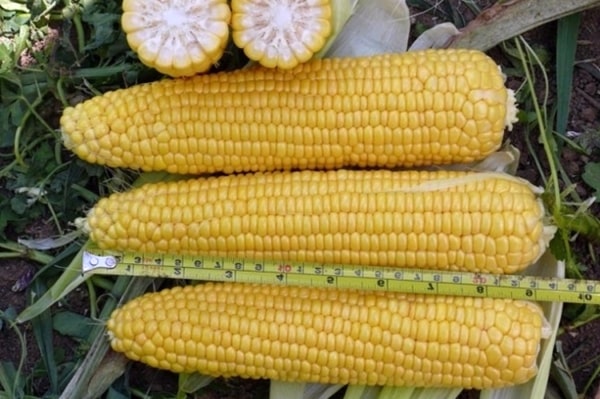
- Spirit belongs to the early sweet cultures. Harvesting begins two months after planting. The plant is unpretentious, reaches a height of two meters, the grains are large, rich yellow.
- Variety Early gold refers to plants of the early ripening period (90 days pass). The vegetable shows resistance to fungal diseases, forms a high yield. The ears are small with yellow, soft grains.
- Ice nectar is a late-ripening variety. Differs in high sweetness and high yield. The ears are large, the grains are yellow, soft and juicy.
Other fruitful varieties and hybrids of cereal crops include: Sundance, Pioneer, Syngenta, Jubili.
Corn: varieties and hybrids
Not only varieties, but also corn hybrids have been identified. They are characterized by high resistance to diseases, rich yields, withstand weather changes, and the harvested crop is stored for a long time and does not deteriorate.
There are 6 main groups of sugar varieties of vegetables, which differ in the color and shape of the grains, as well as in the structure of the ears and leaves. Within each group there are types of high-yielding corn. Types of corn:
- Sugar corn is used in cooking. The grains are nutritious and sweet, the outer shell is wrinkled.
- The toothed type of vegetable is used most often for industrial purposes. A distinctive feature is the starch content of 75%, high glassiness and minimal powderiness.
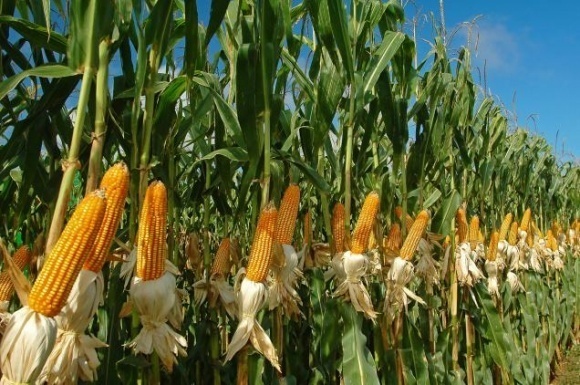
- The flint or Indian variety does not have a high yield, but it has many other advantages: it tolerates frost well, is resistant to many diseases, and a strong stem prevents lodging. Ideal for animal feed due to the high starch content in grains.
- A mealy or starchy variety of grain crops is rarely grown in Russia. It does not store well and endures bad weather. The shell of the grains is practically absent, so harvesting is difficult, most of the ears are damaged.
- Waxy culture is rare. The grains have a characteristic waxy color, the skin is thin and smooth, and they contain 95% starch. Used in animal feed.
- The bursting type of corn is used for the preparation of confectionery. The starch content in grains is not more than 60%.
The most productive varieties of vegetables can be found among other groups. There is also a semi-toothed, scarious, starchy-sugar variety of corn.
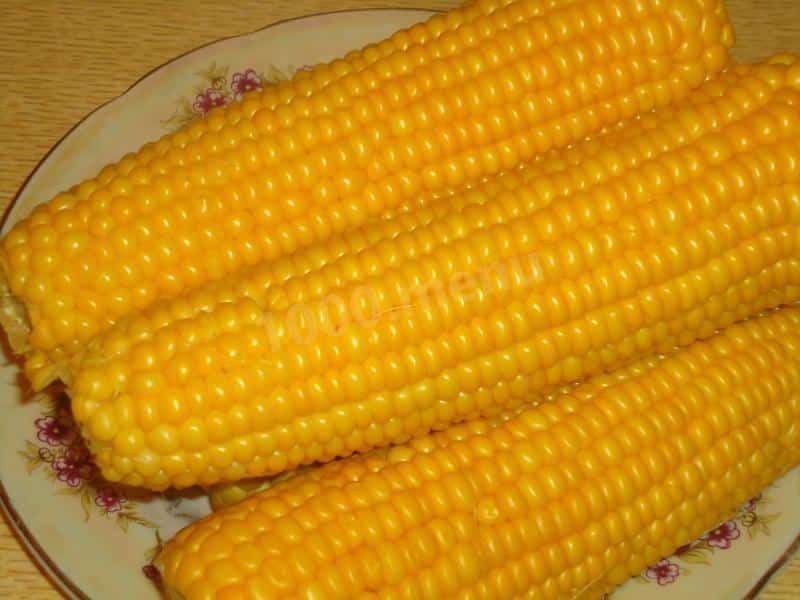
Early corn
Early varieties of maize include plants that are able to form a crop in a short time period, 11–12 weeks after planting. Suitable for regions where summer is short. Better to plant seedlings in open ground. Varieties:
- An early sweet hybrid of Trophy F1 with a 75-day growing season. The stem of the plant does not exceed two meters, the ear is small (no more than 22 cm). The plant is disease-resistant, tolerates drought well.
- Jubilee F1 is distinguished by its early ripening (81 days), rich taste, high yield and disease resistance. The length of the cob is 23 cm, the grains are yellow, sweet.
- The early ripe hybrid Landmark F1 can be stored for a long time after harvest, shows resistance to many diseases, the ear length is 21 cm, the grains are yellow, juicy.
- The Ladoga 250 MV maize hybrid has medium-early ripening limits. The duration of the growing season is 105 days. The grains are dentate, yellow. The plant is 250 cm high. The hybrid is highly drought-resistant, does not lodge, rarely gets sick.
- Ladoga 191 belongs to early maturing corn hybrids. You can start harvesting in 95 days. Grains are odontoid-siliceous, yellow in color. The stem of the plant stretches up to 250 cm. The hybrid tolerates cold well and is highly resistant to disease.
Early crop varieties allow for early harvest and all have good characteristics.

Mid-season varieties of sweet corn
Longer ripening periods are characterized by vegetables with an average ripening period. These varieties of corn tolerate short-term drought well, the crop is well stored and retains its taste in any culinary treatment. Varieties:
- Excellent quality and wonderful, sweet taste hybrid Sweetstar F Plant height about two meters. The ears are 22 cm long, the grains are amber-yellow. Shows good disease resistance.
- A hybrid of maize Maksalia is characterized by an average plant size, an elongated ear, teeth-like grains, yellow. The hybrid is resistant to many diseases, gives a high yield.
- The growing season of the Brusnitsa variety lasts 80 days. The cob is 22 cm long and weighs 200 g. The grains are juicy and yellow in color. High resistance to disease.
- Hybrid Favorite is demanding on fertilizing and irrigation, resistant to many diseases and has a high yield. Plant height 170 cm, ear length 19 cm, weight 200 g. Caryopsis of bright yellow color.
- To varieties corn for grain refers to Pearls with a sweet juicy taste that does not change during boiling, freezing and canning. The stem is 20 cm high, the ear is formed 21 cm long.High disease resistance and good keeping quality.
Other popular varieties and hybrids of cereal vegetable with an average ripening period include: Delicatessen, Rusalka, Spirit F1.
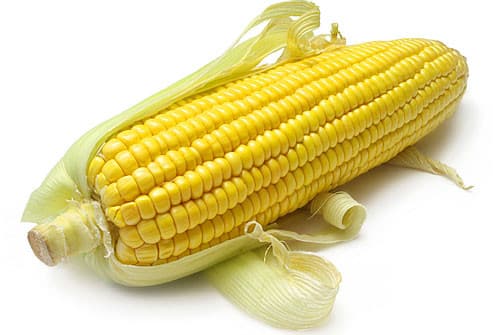
The most productive late varieties
A vegetable with a late ripening of the crop is highly resistant to various adverse factors. The most productive late-ripening corn varieties include the following:
- The growing season of the Polaris hybrid is 105 days. The culture is demanding on fertilizing, irrigation, does not tolerate cold, but is resistant to diseases and lodging. The height of the stem is 200 cm, the length of the ear is 24 cm, the weight is 330 g. The grain contains a lot of sugar, is yellow, and is covered with a thin shell on top.
- The Bashkirovets hybrid begins to ripen after 140 days. Seedlings do not tolerate frost well. The plant reaches 280 cm, the length of the cob is 23 cm, the weight is 350 g. The caryopsis is large, smooth, light yellow in color. Culture is rarely affected by various diseases.
- Russian bursting 3 takes 95 days to ripen. Plant growth 180 cm, ear length 20 cm, weight 250 g. The yield is average, shows resistance to diseases. Used for making popcorn and cereal.
All varieties of grain have a high sugar content, soft and juicy caryopsis.
Popcorn corn
Certain varieties of culture are chosen for popcorn. The weevils of this group of vegetables have thin walls, inside them there is a drop of water with starch, which turns into steam when heated. As a result, the grain bursts under pressure.
The following varieties of corn are used for cooking: Lopai-lopai, Ping-pong, Volcano, Zeya red, Gostinets, Vnuchkina joy.
Characteristics of popcorn corn varieties:
- Ripening of Oerlikon cobs begins after 105 days. Plant height 220 cm, cob weight 120 g, large yellow grains. The variety is distinguished by high cold resistance and disease resistance.
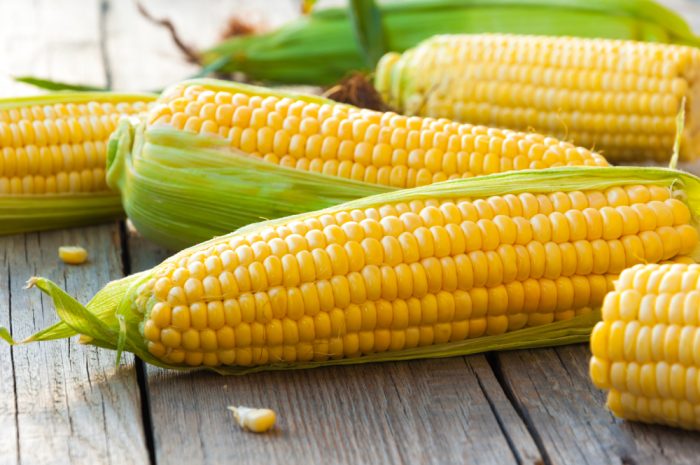
- The Vulcan variety is resistant to many diseases, drought, cold. Plant height 200 cm, ear length 21 cm. Grains are small, yellow.
- The beautiful variety Zeya red is distinguished by its burgundy-red grains and early ripening (80 days). The plant grows up to 180 cm, the length of the cobs is 20 cm.
- An early ripening variety of vegetable for popcorn Vnuchkina Joy is distinguished by early ripening, on average 72 days are enough. The plant reaches a height of 160 cm. The cobs are small, their length is 11 cm, weight is 230 g. The grains are small, orange. The variety is resistant to diseases, gives a consistently high yield even under adverse conditions.
A bursting crop is demanding for watering, fertilizing and air content in the soil. Therefore, harrowing, loosening, weeding should be carried out regularly.
Krasnodar corn
The best varieties of grain vegetables for open ground are widely used in production and are successfully grown in regions with hot climates. All of them are distinguished by high, stable productivity, they tolerate inadequate soil moisture and drought well:
- The mid-early type of plants includes corn seeds varieties Krasnodarskiy 291. The growing season lasts 108 days. The yield of the hybrid is high. The grains are dentate, yellow. Plant height 190 cm, cylindrical ear weighs 300 g. The hybrid is resistant to disease and drought.
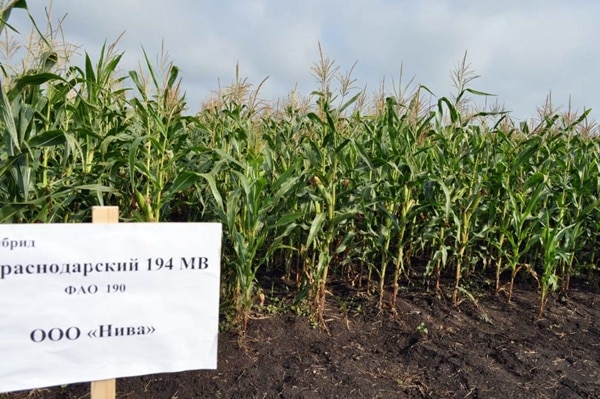
- Corn Krasnodar 194 MB has an average yield. They are cultivated for grain and silage. The main characteristics of the Krasnodarskiy 194 corn variety include: the cob is cylindrical, the grains are odontoid-siliceous, the plant grows up to 250 cm. In the description of the hybrid, there is a high resistance to lodging, cold and disease.
- Krasnodar 377 AMV belongs to the mid-season type of plants with a vegetation period of 113 days. Plant height 250 cm. The grain is yellow, tooth-shaped. The ear weighs approximately 370 g.The hybrid tolerates drought well, disease resistant.
Other varieties of Krasnodar corn include: hybrid Krasnodar corn, Krasnodar sugar 250, Krasnodar 436 MV, Krasnodar 303 TV.
Fodder corn varieties
Fodder corn is grown to feed domestic herbivores. The plant should be distinguished by massive greenery and you can not wait for the complete ripening of the cobs. The following seeds are considered the best varieties of fodder corn:
- Vegetable hybrid Pearl has a high yield, medium-early ripening (82 days), resistant to many diseases.
- Adevey corn hybrid seeds are grown for grain and silage, suitable for early sowing. Plant height 270 cm, elongated cobs, siliceous-dentate grains. The hybrid is resistant to lodging, drought, disease.
- Saratov sugar medium-sized crop variety, stem height 150 cm, is characterized by early ripening. The variety is valued for its resistance to drought, cold weather, disease.
- The best fodder maize is Aurica. Plant height 170 cm Refers to early maturing varieties. Weakly affected by fungal diseases.
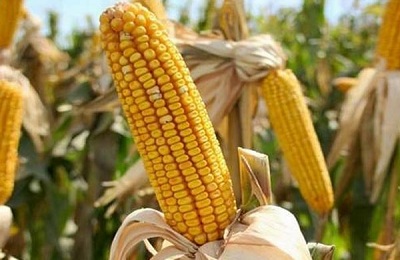
What other varieties of corn are there that can be grown for animal feed? The following feed varieties are popular:
- The high-yielding, early-ripening hybrid Golden Fleece is resistant to major diseases and is resistant to lodging. The culture is demanding on heat, watering and fertilization.
- Plants of the Kuban early maturing hybrid grow up to 170 cm. They are distinguished by high yield of silage mass.
- The early ripe hybrid Viola is characterized by a high silage yield. The hybrid is resistant to lodging and disease. Stem height 2 meters.
There is a variety of elite DKS maize hybrids from Monsanto. All hybrids are suitable for silage cultivation, following traditional tillage practices.
White corn varieties
The white variety of the vegetable is a hybrid. The sweet weevil is white and small in size. The plant itself grows up to two meters, the leaves are long, pointed. Kinds:
- Thompson Prolific is a high yielding crop from North America. The plant grows up to 3 meters. The length of the ears is 42 cm. The large grains are white. It is most often grown for making flour.
- Hybrid Snow avalanche refers to early maturing, medium-sized, high-yielding crops. White grains are sweet and juicy. The hybrid tolerates drought and cold well.

- Mid-season vegetable variety White cloud, intended for the production of popcorn. The plant is medium-sized, the length of the ear is 22 cm. The variety is resistant to southern helminthosporiosis.
- The early ripe hybrid Snow Queen is intended for cooking and baking. The plant shows high resistance to diseases, the height of the stem reaches 180 cm. The length of the ears is 18 cm, the grains are white with a high sugar content.
Other varieties of varieties with white grain color include: White Sugar Queen, Eskimo, Ice Nectar, Snow White.
Japanese corn
Among other varieties of grain crops, Japanese corn stands alone, which is more of an ornamental variety. The subspecies differs not only in the peculiar color and shape of the cobs, but also in beautiful leaves.
The ears are suitable for consumption in the milky stage of ripeness, but they are uneven in shape, and the grains are small. The seeds of Japanese corn are most often dark red in color, the cobs are small, elongated.
Corn The pearl miracle is distinguished by beautiful, decorative foliage with multi-colored stripes. The plant reaches a height of 160 cm. Ripe ears can be eaten and decorated with them. The culture grown in the open field is demanding on heat and soil composition. Does not tolerate drafts and strong winds.
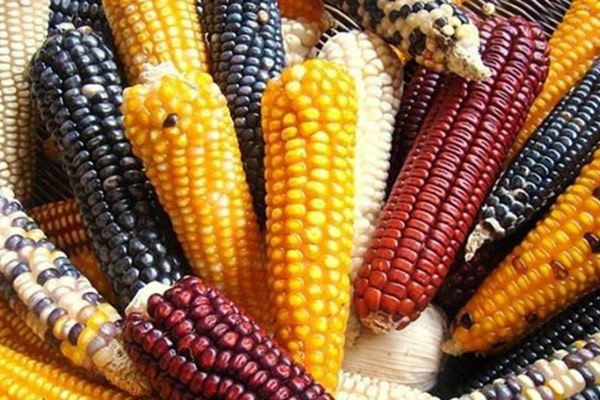
Bonduelle variety
In fact, this kind of corn does not exist.Bonduelle is the name of a canned food trade mark that unites sweet types of vegetables: Trophy F1, Spirit F1, Dobrynya F1, Bonus.
The sweet, coarse-grained Bonduelle corn variety is intended for cultivation in central Russia. Most of the hybrids of the crop are distinguished by high yields and excellent taste. The ears with sweet grains can be eaten fresh or cooked.
To grow corn with good yields, it is necessary to establish a sufficient irrigation and fertilization regime. You can pick up varieties of Bonduelle with different ripening times and tastes.

Maize for cooking
For cooking, you need to choose not fodder varieties of corn, but a sugar variety in the stage of milk ripeness. The color of the grains should be milky yellow or golden. It is best to choose sugar varieties of corn for cooking: Spirit, Voronezh 80, Pioneer, Ice nectar, Jubili, Early gold, Lakomka.
You can cook a vegetable in a saucepan, slow cooker, oven, microwave. The ear does not need to be peeled before boiling, just remove the top leaves. The cobs of the same size are put in cold water for a while and only then they start cooking. Then they are transferred to new cold water and put on fire. Salt and sugar are added 15 minutes before cooking.
Young corn takes 20 minutes to be fully cooked. Ripe vegetables are cooked a little more, about 40 minutes. The readiness can be judged by the softness of the grains, if they are easily pierced with a fork, then you can drain the water. After that, for another 30 minutes, the pan with the vegetable is wrapped in heat.
Toothed and semi-toothed
In varieties of dent corn (Sterling, Syngenta, Dneprovsky 172 MV, Krasnodar 436 MV, Kadr 443 SV), the grains have an elongated shape with a characteristic depression at the top, which is formed during the ripening stage. In outline, they resemble a tooth. This group of plants includes varieties and hybrids with yellow and white grains. Most often, varieties with late harvest ripening.
A semi-toothed crop is obtained by crossing flint and dent corn. This group is distinguished by varieties with high yields. The plant can be used for the production of animal feed, and the ears are allowed to be eaten.
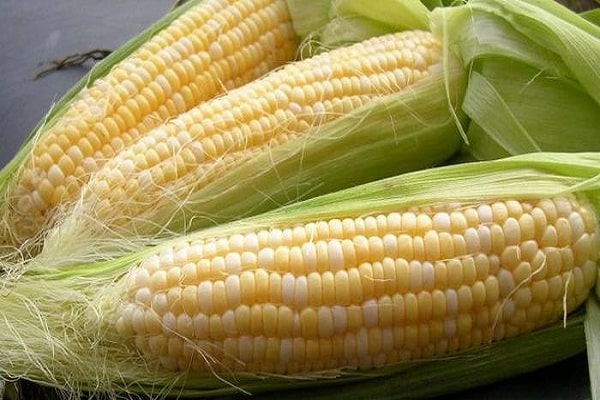
Siliceous
The shape of the flint corn grains is round, the top is convex, the surface is smooth and glossy. The color can be lilac, chocolate, variegated or yellow. A distinctive feature is the content of a large amount of starch.
The most popular types of flint corn are: Voronezh 80, Voronezh 76, Severodakotskaya, Cherokee Blue, Ornamental Congo. All varieties are characterized by high productivity, resistance to diseases and changes in air temperature.
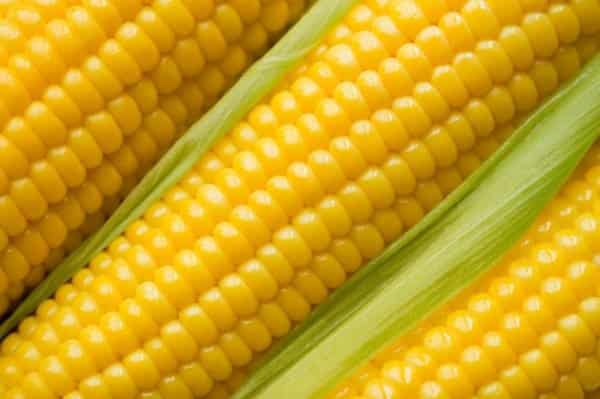
Hybrid phenomenon
The SI corn hybrid has a medium early harvest ripening period. Grown for the production of animal feed, as well as for grains. The grains have a tooth-like shape of orange color, the starch content is 72%. The plant exhibits high disease resistance.
Other characteristics of the hybrid include the phenomenon: large ears with a large number of rows, the grains quickly release moisture during ripening, the root system develops quickly. The plant is highly resistant to drought, frost, and lodging.
Pioneer and its hybrids
A well-known producer of corn seeds is Pioneer. The varieties of plants produced are grown in any climatic conditions, they show resistance to common diseases of grain crops and allow you to harvest a rich harvest. The grains on the cob are elongated, large, and dentate. The casing has a medium hardness.
The most popular Pioneer maize hybrids include: PR38D93 Anasta, 3893 Clarica, Pioneer 37D25 and 39F58. Characteristics of varieties:
- Siliceous-tooth-like variety Pr39B29 FAO 170 with very early ripening. Grown for silage and grain. The pulp of the grains has a high starch content; they quickly release moisture during the ripening period.
- Elite FAO 210 is characterized by rapid growth, resistance to adverse factors and diseases, and adapts well to any soil composition. The grain is of the siliceous type, characterized by high moisture return during ripening.

- Costella FAO 220 is a short plant. The grains are of the siliceous-tooth type with a high starch content. The hybrid is resistant to major diseases, adapts to any soil composition.
- The mid-season hybrid of Claric FAO 310 has a high yield. The type of grain is tooth-like; it gives off moisture well during maturity. The hybrid has good drought tolerance and disease tolerance.
- Medium late hybrid PR 38D93 Anasta with high yield potential. The grains are distinguished by high moisture return and are of the tooth-like type. Shows resistance to many diseases.
Due to the high content of nutritional components in Pioneer corn, it is used for the production of feed for herbivores, and is also used in the food industry for the manufacture of flour, cereals, canned products.
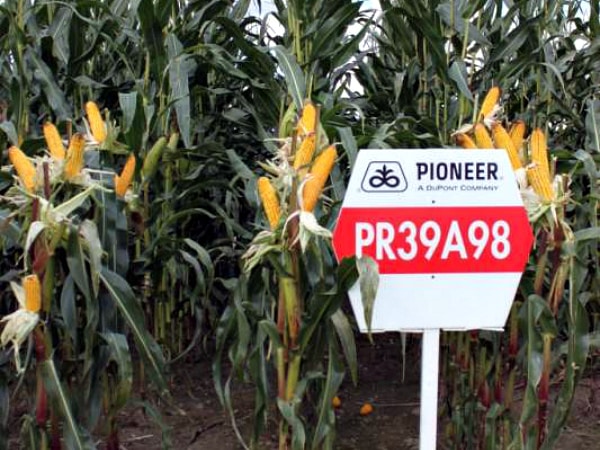
Filmy
All varieties of hulled corn have no nutritional value, so the variety is very scarce. Grow corn for silage only, for the sake of green mass. A widespread variety of culture in Africa, where it goes to feed herbivores.
The homeland of the filmy plant species is South America. Grains in color and shape are no different from other types of corn.
A characteristic feature is the presence of scales that cover the entire ear and each individual grain.
Waxy
Waxy maize varieties have a matte, smooth grain surface. The outer shell is opaque and dense. The pulp is mealy, sticky, since the starch of the pulp is almost 100% amylopectin.
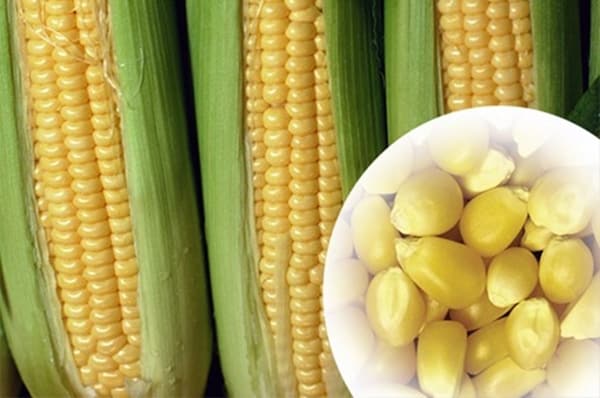
Description of varieties:
- Mid-season Strawberry culture refers to ornamental plants, but you can eat the cobs as well. The taste is pleasant and slightly sweet. Leaves are ribbon-shaped with white stripes. The cobs are red-burgundy, 7 cm long.The stem of the plant is 150 cm.
- The mid-season variety Mother of Pearl reaches a height of 220 cm. The ears are pyramidal in shape, 14 cm long. The grains are oblong, gray, lilac-white and pearlescent in color.
- Oaxacan red corn is an early maturing crop (90 days). Plant height 2 meters. The ear is rounded, 20 cm long. The medium-sized grain has a red color, juicy and sweet on the palate.

The kernels on the cob of waxy maize come in a variety of shapes and colors. The main purpose of a mature crop is its further processing into starch.
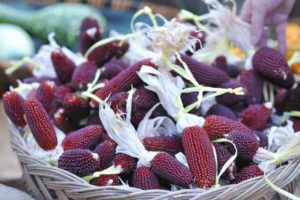
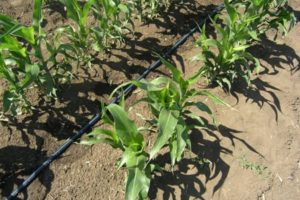

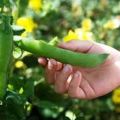
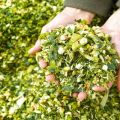




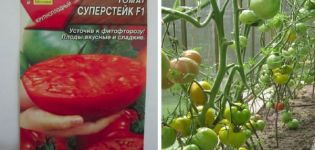
embarrassed to ask, how long has corn become a vegetable?